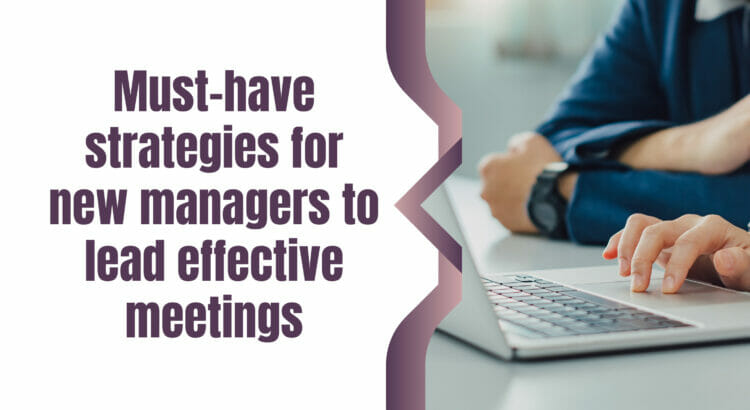We’ve all been in meetings, and started to wonder why am I here? Or how much longer is this meeting? According to Doodle (the online calendar tool) 37% of employees believe that their company’s most significant cost is unnecessary meetings.
Running an effective meeting is an art, and something that is easily learned. Meetings are essential for business, but they also must serve a purpose and be valuable.
It’s my view that you should always be respectful of people’s time, and as leader or business owner you need to value the time your team is putting into meetings, so make them purposeful and valuable to all involved. Research has also shown that the number of meetings employees attend have increased!
Before calling a meeting, here are a couple of things to consider:
- Can this information be disseminated another way?
- If not, what background information can be sent prior to the meeting
- Set the meeting at an appropriate time – ie some companies contain meetings to certain periods during the day such as only in the afternoons.
When thinking about meetings, there are so many different kinds and your objective for the meeting and the desired outcome will set the tone of the meeting type. If you new to meetings, here a quick overview of the different types:
- General meetings
- 1:1 Meetings
- Project / status update meetings
- Brainstorming
- Team meetings
For any regular team meetings, I always like to maintain the same day, and same time (whether weekly or monthly) as this creates a routine and efficiency. Remember – time is money.
You’ve decided that you need to hold a meeting, and you’ve identified your meeting purpose and set a clear objective or outcome that is needed. Here are the 12 strategies to lead an effective meeting.
Actions To Take Before The Meeting
1. Prepare the agenda
Clearly set out your agenda, including presentation points and discussion items. It is my preference to align a timeframe to each agenda item so the meeting runs to schedule (with practice, you can get very accurate with your time, but don’t be too hard on yourself if you don’t get this right the first time).
Where possible make agenda items into questions, as this stimulates thought and generates dialogue.
2. Invite people who need to be there
However, don’t get too liberal with your meeting attendees, if you aren’t sure if someone should be present, seek guidance or call them yourself to confirm if the meeting is relevant for them.
3. Identify a facilitator and presenters
Generally, you would facilitate the meeting yourself, however if it’s not you facilitating make sure you speak to someone who is happy to facilitate. Identify those who will present on different agenda items (if that is needed).
4. Get clear on your timeframe
Don’t automatically set the meeting time frame to a usual default such as 60 or 90 meetings – be concise with your timing.
5. Send relevant material to attendees
Issue the agenda and any pre material with as much notice and preparation time as possible.
The Meeting Itself
1. Arrive early
Be punctual, and arrive early to check your tech before a big meeting – don’t waste 10 minutes of your meeting time sorting out issues.
2. Stick to the agenda
There should always be a little give and take with your agenda timing, but as a facilitator try to keep on meeting on topic. If additional issues are raised, it may warrant flagging them for a meeting at another time.
3. Assign action items as you go
Keep meeting participants accountable, by ensuring action items are assigned as you go. Delegate where appropriate.
4. Meeting wrap up
As part of the meeting wrap up (and this should be an agenda item), revisit the list of to – dos, and actions that arose from the meeting. Consider any messaging or communication that needs to be shared, and allocate a person or people who should be responsible for communicating messages more broadly.
After The Meeting
1. Communicate meeting notes and outcomes
Issue meeting minutes or notes to everyone. Ensure these are kept on file and disseminated to all attendees in a timely fashion.
2. Follow up on to dos
Follow up on people and tasks to ensure that actions have been completed. Accountability is important, and it’s your job as a leader to make sure this happens.
3. Reflect and seek feedback
Reflect on the meeting and ask yourself questions such as was the agenda relevant. Was there good participation, how could this be improved. Did the time of the meeting or agenda items need to change.. Where appropriate, seek feedback on the meeting. Ask questions such as, was the meeting valuable to participants, what could be changed to increase the value.
Conclusion
Learning to run meetings is a skill you can master quickly. Just remember to follow the strategies and tactics above, you’ll be a meeting master before you know it.
If you wanted some more stats on meetings, Otter.ai has released this infographic:
